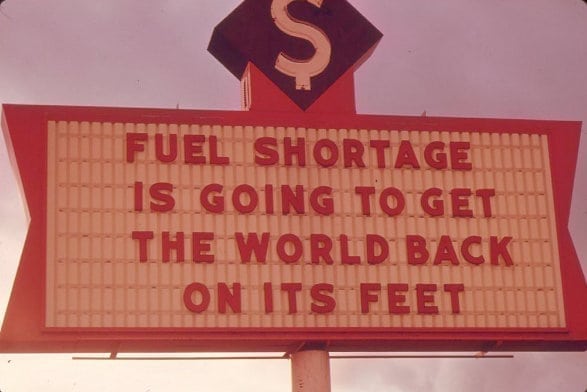
Last year, Oil Price posted an article stating that there might be an oil shortage in the US as early as 2016. Cited among the reasons was decreased US production due to falling oil prices. While the United States has been in an oil boom for many years, there’s significant concern about a global energy crisis. The issue can broken into several pieces, each taking a different perspective on what it means to not have enough energy. Let’s analyze those different pieces to provide more insight on what it means to be in a global energy crisis.
Pieces of the Energy Crisis Puzzle
The Global Economic Symposium explains that energy demand from developing nations like China and India is contributing to a future global economy that will consume ever more energy. Worries about climate change makes supplying this energy difficult, as fossil fuels like coal, gas and oil are our current leading sources. John Brown explains to the Global Economic Symposium that the term “global energy crisis” can be broken down into three separate issues.
Threat of Running Out of Energy
Currently, fossil fuels contribute to 80% of our energy needs. Brown explains that while there is a threat of the world running out of energy sources, we still have around 30 years before this occurs.
Despite this bleak outlook, there have been recent oilfield discoveries thanks to technological developments.The Energy Collective puts this technological boom in the context of eight years ago. At that time, many believed the global energy crisis was solely related to our eventual depletion of petroleum reserves. Most were unaware of the investments going into oilfield technology that’s allowed for the discovery and rejuvenation of oilfields. Brown explains that these advancements, coupled with the potential of near-unlimited renewable energy sources, means there will likely be enough energy to meet our future needs.
Access to Energy
The majority of the world’s energy reserves is concentrated in a few regions. Oil reserves are located mostly in Africa, the Caspian Basin, and the Persian Gulf. Around half of the world’s gas reserves are located in Iran, Qatar, and Russia. The strained relationship between many of the nations/regions and high-energy-consuming nations makes future access a bit uncertain. Many European nations, along with the United States, are seeking ways to gain energy independence.
Climate Change
Evidence points to the carbon dioxide released with the burning of fossil fuels to be a contributor to global warming. Brown explains that in this respect, we are in an energy crisis because we’re using energy in the wrong way.Conserve Energy Future explains that many nations aren’t using renewable energy sources. Within countries like the United States, there is still a political debate around the legitimacy of climate change. The Energy Collective states in the same article that while we’ve misunderstood what it means to have an energy crisis, the solution of searching for renewable energy sources, remains the same.
The term “global energy crisis” encompasses many issues that, particularly for those unfamiliar with them, should probably be discussed separately. Despite numerous fossil fuel reserves and renewable energy sources, the threat of running out of energy sources is very real. Political instability in regions with plentiful energy reserves makes future energy security uncertain. Reducing the effects of global warming puts a limit on our future fossil fuel consumption. In more ways than one, there is an impending energy crisis. While oil will continue to be an important energy source, we as a global community are justified in searching for other solutions.

